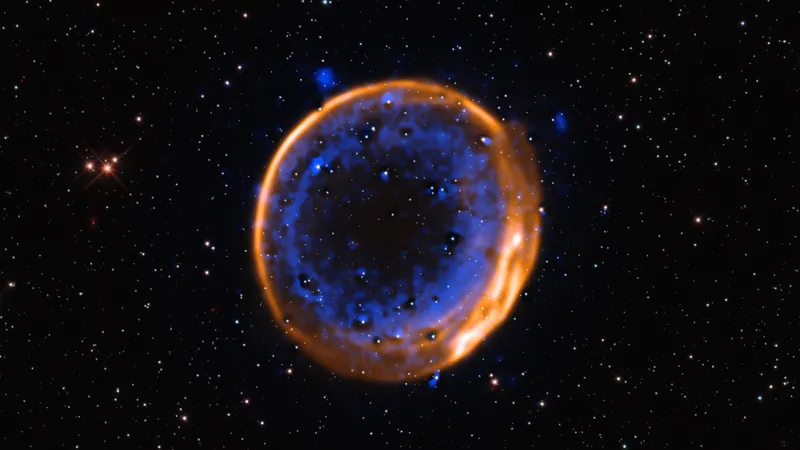
Stunning Discovery: Astronomers Capture First Image of a Star That Exploded Twice!
2025-07-02
Author: Rajesh
In a cosmic revelation that defies our understanding, astronomers have unveiled the first-ever image of a star that died not once, but twice! This extraordinary event, known as a "double-detonation," raises fascinating questions about how some stars could supernova without reaching the critical Chandrasekhar limit—the minimal mass required for such an explosion.
Utilizing the powerful Very Large Telescope (VLT) and its Multi Unit Spectroscopic Explorer (MUSE) instrument, scientists focused on the remnants of supernova SNR 0509-67.5, located a staggering 60,000 light-years away in the constellation Dorado. Their investigation has revealed complex structures within this explosive debris, hinting that the original star went through two violent explosions.
A Stellar Vampire's Journey
The star in question was a white dwarf—a stellar remnant formed when a star similar in mass to our Sun exhausts its nuclear fuel. These white dwarfs are known to produce Type Ia supernovas, which are crucial for astronomers as they serve as reliable "standard candles" for measuring cosmic distances due to their consistent brightness.
Priyam Das, the research team leader from the University of New South Wales, emphasized the significance of white dwarf explosions in astronomical research. Despite their importance, the mechanism leading to their catastrophic detonation remains a mystery. Scientists largely believe that Type Ia supernovas originate in binary star systems. When one star in such a system becomes a white dwarf and orbits close to its still-living companion, it begins to siphon off material—effectively becoming a cosmic vampire.
The Mystery of Double Detonations
As this star feasts on material from its companion, it accumulates mass until it reaches the Chandrasekhar limit, leading to a spectacular Type Ia supernova explosion that typically obliterates the white dwarf. However, a tantalizing theory has emerged suggesting that some white dwarfs might have a second act.
In a double-detonation scenario, as a white dwarf absorbs material, it may envelop itself in a layer of helium that becomes unstable, igniting in a first explosion. This initial blast creates a shockwave that travels inward, eventually igniting the core and triggering the supernova, potentially before the star even exceeds the Chandrasekhar limit.
Visualizing the Cosmic Fingerprint
Astrophysicists recently discovered that this double-detonation process leaves a unique "fingerprint" in the remnants of supernova explosions. This fingerprint was visually confirmed in the debris of SNR 0509-67.5, a supernova first identified in 2004, which has been evolving in the Large Magellanic Cloud for about 400 years!
Beyond serving as a crucial piece in understanding the evolution of white dwarfs and their explosive deaths, the visual evidence from SNR 0509-67.5 offers a breathtaking spectacle for astronomy enthusiasts.
In conclusion, this remarkable discovery not only enlightens the scientific community about the enigmatic nature of white dwarf explosions but also captivates viewers with the stunning beauty of the cosmos. As Das aptly puts it, this tangible evidence of a double-detonation marks a monumental stride toward unraveling a long-standing astronomical enigma.



 Brasil (PT)
Brasil (PT)
 Canada (EN)
Canada (EN)
 Chile (ES)
Chile (ES)
 Česko (CS)
Česko (CS)
 대한민국 (KO)
대한민국 (KO)
 España (ES)
España (ES)
 France (FR)
France (FR)
 Hong Kong (EN)
Hong Kong (EN)
 Italia (IT)
Italia (IT)
 日本 (JA)
日本 (JA)
 Magyarország (HU)
Magyarország (HU)
 Norge (NO)
Norge (NO)
 Polska (PL)
Polska (PL)
 Schweiz (DE)
Schweiz (DE)
 Singapore (EN)
Singapore (EN)
 Sverige (SV)
Sverige (SV)
 Suomi (FI)
Suomi (FI)
 Türkiye (TR)
Türkiye (TR)
 الإمارات العربية المتحدة (AR)
الإمارات العربية المتحدة (AR)